Corrugated Cardboard Packaging Technical Information Guide
Common Corrugated Board Styles:
Corrugated fiberboard or "combined board" has two main components: the liner and the medium. Both are made of a special kind of heavy paper called containerboard. Linerboard is the flat facing that adheres to the medium. The medium is the wavy, fluted paper in between the liners
Single Face: One medium is glued to one flat sheet of linerboard.
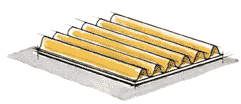
Single Wall: The medium is between two sheets of linerboard. Also known as Double Face.
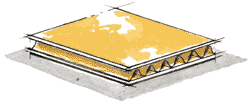
Double Wall: Three sheets of linerboard with two mediums in between.
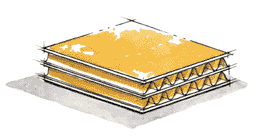
Triple Wall: Four sheets of linerboard with three mediums in between.
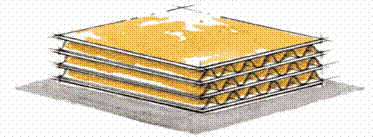
Corrugated Board Flutes Explained
Architects have known for thousands of years that an arch with the proper curve is the strongest way to span a given space. The inventors of corrugated fiberboard applied this same principle to paper when they put arches in the corrugated medium. These arches are known as flutes and when anchored to the linerboard with adhesive, they resist bending and pressure from all directions.
When a piece of combined board is placed on its end, the arches form rigid columns, capable of supporting a great deal of weight. When pressure is applied to the side of the board, the space in between the flutes acts as a cushion to protect the container’s contents. The flutes also serve as an insulator, providing some product protection from sudden temperature changes. At the same time, the vertical linerboard provides even more strength and protects the flutes from damage.
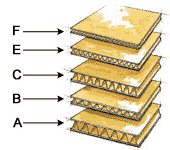
Flutes come in several standard shapes or flute profiles (A, B, C, E, F, etc.). A-flute was the first to be developed. B-flute was the next and is much smaller than A-flute. C-flute followed and is between A and B in size. It is also the most common large flute profile. E-flute is smaller than B and F-flute is smaller yet. Due to variances in flute sizes between manufacturers, FBA no longer publishes flute guidelines.
In addition to these five most common profiles, new flute profiles—both larger and smaller than those listed here—are being created for more specialized boards. Generally, larger flute profiles deliver greater vertical compression strength and cushioning, while smaller profiles provide better resistance to process and printing crush.
Different flute profiles can be combined in one piece of combined board. For instance, in a triple wall board, one layer of medium might be A-flute while the other two layers might be C-flute. Mixing flute profiles in this way allows designers to manipulate the compression strength, cushioning strength and total thickness of the combined board.
